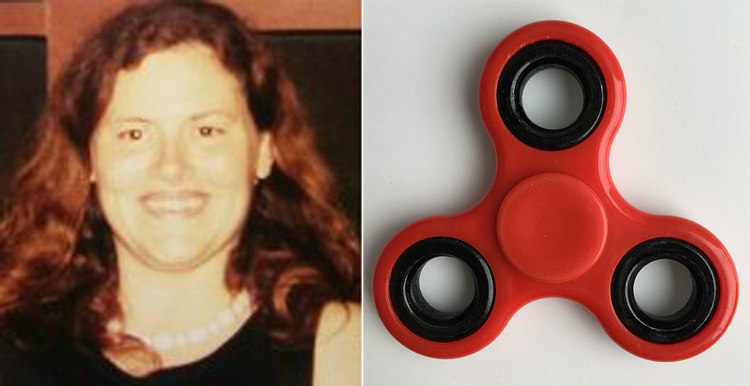Necessity is the mother of invention. Though there are many people both smart and generous, it is not until a specific, difficult situation arises that they are driven to solve it creatively. Whether one is well-off in their life or not, it does take a generous heart, indeed, to forgo the financial gains their inventions accrue. Some give away their ideas for the betterment of the human race, and some believe that doing so is a moral commitment towards the world. Here are ten such inventions everybody uses but the inventor didn’t make any money.

5% Discount Coupon: Unknown Tentsile
1. Matchsticks
John Walker invented the friction matchsticks we use today and refused to patent his invention to make it freely available for anyone to make.
After finding himself averse to surgical operations following an apprenticeship to the principal surgeon of County Durham, John Walker set up a small business as a chemist and druggist in 1818, at 59 High Street, Stockton. Walker soon developed an interest in obtaining fire easily for everyday purposes. Though there were already many chemical formulas that could produce fire explosively, transmitting it to a piece of wood for slow burning proved impossible.
Walker began experimenting with various chemical combinations. On one occasion, a match that was dipped in a particular combination caught fire accidentally due to friction upon the hearth. He soon realized its practical value and began manufacturing matches coated in sulfur and tipped with the mixture of sulfide of antimony, chlorate of potash, and gum. Despite being advised by Michael Faraday and others, he never patented his invention making it freely available for anyone to make.
2. Karaoke Machine
The karaoke machine’s inventor, Daisuke Inoue, did not patent his invention and so did not benefit from all the millions of karaoke performances it was used for. He was, however, awarded the Ig Nobel Peace Prize in 2004.
Daisuke Inoue, born on May 10, 1940, is a Japanese businessman who used to play the drums in high school. When he found that he was not particularly good at it, he took on the business management of his band. The band would provide background music in clubs where businessmen would want to get on the stage and sing. He had the idea of karaoke, meaning “empty orchestra” in Japanese when he couldn’t attend a backup music job for one of his clients. So instead, he recorded the music and sent the tape.
Realizing the idea could have a widespread appeal, he designed and assembled a machine with tapes and amplifiers with his friends. In 1971, he rented 11 of them to various bars in Kobe. He neither patented the invention nor received any profits from it. However, he also invented a pesticide to repel cockroaches and rats that damaged the electronics in the machine. In 2004, he received Ig Nobel Prize, a parody of the Nobel Prize given to people with unusual or trivial achievements in scientific research, at Harvard University.
3. World Wide Web
Tim Berners-Lee, the inventor of the World Wide Web, made his idea available freely with no patent or royalties so that anyone could easily adopt it.

After working as an independent contractor at CERN in the 1980s, Berners-Lee ran the technical department at John Poole’s Image Computer Systems, Ltd, Bournemouth, Dorset, for three years. There he gained experience in computer networking while working on a “real-time remote procedure call” project after which he returned to CERN in 1989.
The same year in March, he saw an opportunity to connect the idea of hypertext with the internet, the Transmission Control Protocol (TCP) and domain name system to be precise, giving birth to the World Wide Web. In 1994, he founded the W3C (World Wide Web Consortium) and made his idea freely available with no patents and no royalties so that the standards could be easily adopted by anyone. For his services to the global development of the internet, he was knighted and promoted from Officer of the Order of the British Empire (OBE) to Knight Commander of the Order of the British Empire (KBE).
4. Fidget Spinner
Catherine Hettinger, the inventor of fidget spinner, couldn’t afford the $400 renewal fee after the patent expired in 2005 and so never benefited from its popularity.

Catherine Hettinger, a chemical engineer by training, invented the fidget spinner in the 1980s as a way to distract children and promote peace after a visit to Israel. Since then, the toy has been well-received and is claimed to have a therapeutic effect on children with ADD, ADHD, anxiety, and autism. It has also become a favorite among children without any of these problems leading teachers to believe it was counterproductive and so confiscated it to prevent distractions during class hours. In 2005, her patent expired and she couldn’t afford to pay for its renewal.
5. Three-Point Seat Belts
Volvo invented the three-point seat belt and made its patent open in order to save lives.
The three-point, or 3-point, seat belt was first introduced by Volvo in 1959 and was developed by Nils Bohlin who had previously worked on ejection seats at Saab. The seat belt is a Y-shaped arrangement and is the unification of lap and sash belts. During a collision, the seat belt works by spreading the moving body’s energy over the chest, pelvis, and shoulders, thus reducing injuries. The first car to equipped with 3-point seat belts was a Volvo PV 544, and the first car to feature it as a standard item was a Volvo 122. After its development, Volvo made the design patent open in the interest of safety so that it would be available for all other car manufacturers for free.
6. Microsoft Solitaire
Wes Cherry, the developer of Microsoft’s Solitaire, received no royalties despite it being one of the most used applications of all time.
Microsoft Solitaire was developed in 1989 by a summer intern named Wes Cherry. The game is based on the card game of the same name, also known as Klondike. The card deck was developed by Susan Kare, a Macintosh pioneer. From 1990, Microsoft included the game as part of its Windows product line since Windows 3.0. The game was intended to soothe the users intimidated by the newly introduced graphical user interface and to help them get used to mouse controls such as the drag-and-drop technique required for moving the cards.
7. Polio Vaccine
After discovering and developing the polio vaccine, Jonas Salk chose not to patent it as he believed public health should be a moral commitment. If the vaccine was patented, it would have earned Salk an estimated $7 billion.
While working on a project for the National Foundation for Infantile Paralysis to determine the number of types of polio viruses in 1948, Salk saw an opportunity to extend it towards the development of a vaccine. During the next seven years he worked on developing the vaccine, and by 1955, he conducted successful field trials in which over 1.8 million school children participated. When the discovery was made public on April 12, 1955, he was hailed a “miracle worker.” The day was almost declared a national holiday, and several countries began to plan polio immunization campaigns. Salk never patented his discovery and when asked who owns the patent, he replied, “Well, the people I would say. There is no patent. Could you patent the sun?”
8. Tetris
Alexy Pajitnov, the creator of Tetris, did not receive any royalties for his game until 1996 because the rights were owned by his employer, the Soviet government.
Alexy Pajitnov is a Russian video game designer and computer engineer who was a fan of puzzles and played a lot with pentomino toys as a child. In 1984, while working for the Dorodnitsyn Computing Centre of the Soviet Academy of Sciences, an R&D center founded by the Soviet government, Pajitnov developed Tetris along with Dmitry Pavlovsky and Vadim Gerasimov. As the game was licensed and managed by the Soviet government, Pajitnov did not receive any royalties. In 1991, he moved to the United States and founded The Tetris Company in 1996 with Henk Rogers.
9. Magnetic Strip on Credit Cards
Rob Klein invented the magnetic credit card strip in 1968, and though he patented the idea, he never made much money out of it.
In 1964, Ron Klein was appointed the Director of Engineering at Ultronics Systems Corp., which was later acquired by GT&T Financial Data Services. The company had a large number of clients with retail businesses and every month the credit card companies gave them a list of thousands of account numbers which were poor credit risks. So, every time a customer paid using a credit card, the salesperson had to go through the entire list to see if the credit card number was in it which was a very time-consuming process.
To speed up the process, Klein had an idea that he could store the list on a memory device with a keypad over which the salesperson could type the credit card number. He then had another idea that he could use coded holes on the card which would represent the number. Then, he had another, final idea that he could use magnetic tapes like the tape recorders, which were a new technology at that time, which the memory device could read. He pitched the idea with a credit card manufacturer giving rise to the Validity Checking System which is used to check the validity of credit cards.
10. Smiley
Harvey Ball, the creator of smiley, never trademarked or copyrighted his creation and only received $45 for it.
After the Second World War, Ball started his own advertising business, Harvey Ball Advertising, in 1959. One of his clients, the State Mutual Life Assurance Company of Worcester (now Hanover Insurance), Massachusetts, purchased the Guarantee Mutual Company of Ohio resulting in a decrease in employee morale. Ball was hired in 1963 as a freelance artist to solve the problem. In less than ten minutes, Ball designed the smiley, and 100 smiley pins were handed out to the employees to help them smile while at work.
The use of smileys became part of the company’s friendship campaign. They became so popular that by 1971 over 50 million smiley face buttons were sold. Ball only received $45 ($315 as of 2010) for his creation. However, according to his son Charles, he never regretted not registering it saying, “Hey, I can only eat one steak at a time, drive one car at a time.”
Source : unbelievable-facts.com/2017/08/inventors.html, mirror.co.uk